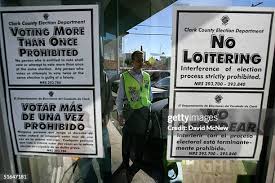
Voter intimidation is a serious threat to the foundation of democratic systems worldwide. It undermines the right to free and fair elections by creating an environment of fear and coercion. This article explores the various forms of voter intimidation, its historical context, the legal protections in place, and measures to combat it.
What is Voter Intimidation?
Voter intimidation refers to any action or behavior designed to discourage or coerce individuals from voting freely. It can manifest in various forms, from overt threats of violence to more subtle tactics like spreading misinformation. The goal is to influence the outcome of an election by preventing certain groups from casting their vote or swaying their decision under pressure.
Historical Context of Voter Intimidation
Voter intimidation is not a new phenomenon. Throughout history, it has been used as a tool to suppress certain groups, particularly marginalized populations. In the United States, for example, African American voters were systematically targeted during the Reconstruction era and the Jim Crow period. Similarly, other countries have experienced voter intimidation during periods of political unrest or authoritarian rule.
Common Tactics of Voter Intimidation
Voter intimidation can take many forms. Some of the most common tactics include:
Physical threats or violence: Intimidating voters at polling stations through the presence of armed individuals or violent acts.
Harassment: Persistent efforts to contact or follow voters, often with the intent to pressure them into voting a certain way or not voting at all.
Disinformation campaigns: Spreading false information about voting locations, dates, or eligibility requirements to confuse or discourage voters.
Workplace coercion: Employers threatening employees with job loss or other repercussions if they do not vote for a specific candidate or party.
Law enforcement presence: The strategic use of police or other law enforcement officers near polling stations, which may discourage marginalized communities from voting due to fear of arrest or harassment.
Legal Protections Against Voter Intimidation
Many countries have laws in place to prevent voter intimidation and protect the integrity of the electoral process. In the United States, for example, voter intimidation is prohibited under both federal and state laws. The Voting Rights Act of 1965 and the Help America Vote Act (HAVA) are two pieces of legislation that provide protections against intimidation, harassment, and coercion at polling places.
Internationally, organizations like the United Nations (UN) and the European Union (EU) have set standards to ensure free and fair elections. These laws prohibit any form of intimidation or interference that could prevent individuals from exercising their right to vote.
The Role of Election Observers
Election observers play a critical role in identifying and preventing voter intimidation. These individuals or groups, often affiliated with international organizations or non-governmental organizations (NGOs), monitor elections to ensure they are conducted fairly. They report instances of intimidation, fraud, or other irregularities to local and international authorities, who can then take appropriate action.
Impact of Voter Intimidation on Democracy
Voter intimidation has a significant impact on the legitimacy of elections. When individuals are coerced or scared into voting a certain way, or not voting at all, the results may not accurately reflect the will of the people. This undermines the democratic process and can lead to increased political instability, mistrust in government institutions, and long-term damage to democratic norms.
Strategies to Combat Voter Intimidation
Efforts to combat voter intimidation must involve a multi-faceted approach:
Legal action: Ensuring that laws against voter intimidation are enforced and violators are prosecuted.
Public awareness: Educating voters about their rights and what to do if they experience intimidation at the polls.
Increased security: Protecting polling stations and voters through increased security measures that do not themselves become a source of intimidation.
Reporting mechanisms: Establishing clear channels for voters to report incidents of intimidation and ensuring swift investigation and response.
Voter intimidation poses a grave threat to the democratic process by undermining the principles of free and fair elections. While laws and protections exist to counter this issue, it requires the collective effort of governments, NGOs, election observers, and the public to ensure that every individual can exercise their right to vote without fear or coercion. Combating voter intimidation is essential to maintaining the integrity of democratic institutions and promoting trust in the electoral process.
Subscribe to Follow Global Trends for daily global news.
Find Out How To Make Money As A Full Time Writer/Blogger Guide.
To Advertise, Advertise Your Affiliate Links on FollowGlobalTrends.com for Just $1 Per Link Per Month!
Related Articles
Written By: Enyoghasi Ngozi pricillia
